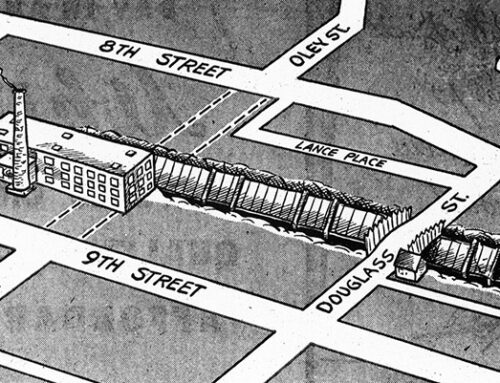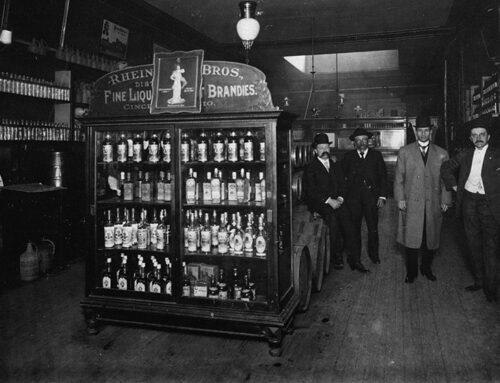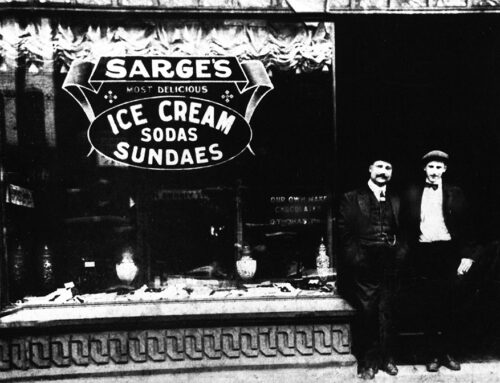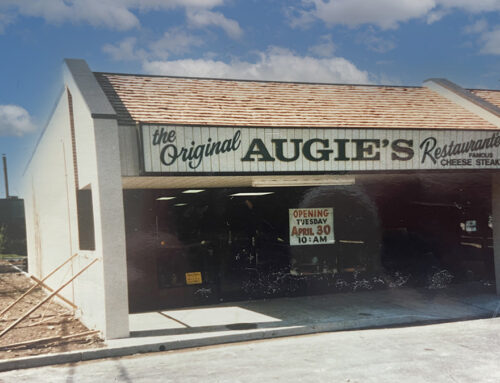The Penn Hardware was founded in Reading, PA in 1877 by Charles Raymond Heizmann, who became the president of Penn Hardware, and his brother Albert Aloyeuis Heizmann, who became treasurer. Penn Hardware made some of the finest brass and steel hardware produced in America.
Below: Penn Hardware Company Complex, 1922.

Charles Raymond Heizmann, eldest son of Charles L. and Mary C. (Eichorn) Heizmann, was born in Reading, January 23, 1835, receiving his education in the Reading private schools and St. Mary’s College, Wilmington, Delaware. When only fifteen he entered his father’s music store to receive business training. His father allowed the boy to undertake many responsible duties, in the performance of which he not only showed great interest, but also developed self-confidence and executive ability. He was often sent to buy goods in Philadelphia. When his father died he assumed control of the business, which he purchased from the estate in 1865.
Below: Charles Raymond Heizmann.

In 1870, Charles R., admitted his brother, Albert A., to a partnership. Albert Aloysius Heizmann was born in Reading Sept. 11, 1848, and was educated in the private schools of Reading, St. Mary’s College, Wilmington, Del., and at the University of Notre Dame, South Bend, Ind., graduating there in the English and commercial course in 1865. In the same year he entered the store of his brother, Charles Raymond, at the corner of Sixth and Penn streets, Reading, and in 1870 he became an equal partner in the business.The old business was continued successfully, and in 1877 they made a new departure, establishing the Penn Hardware Works. The latter business had in that short time developed so rapidly that in 1879 original store was sold, and the energies of both partners concentrated on the newer business.
Below: Albert Aloysius Heizmann.

The Penn Hardware Works were first located in a small building on Front Street, which the firm leased, and employment was given to ten hands. As the business grew and more space was required, they purchased several acres of land at the foot of Spruce Street between the former Schuylkill Canal and the Schuylkill River in close proximity to the Reading, Pennsylvania and Wilmington Northern Rail roads. There were ten principal buildings, including the four foundries which were each 110 x 60 feet in dimensions, several large factory buildings, averaging 180 x 60 feet in dimensions, three stories high, and a four story building, 160 x 90 feet in dimensions. A 6-story structure was erected in 1909. The company manufactured its own gas, for fuel and lighting, a two-story building, 30×80 feet, having been erected for the gas plant.
Below: Vintage Map of Southwest Reading showing Penn Hardware Company Complex.

The large manufacturing facilities had been the result of the great demand created by the solid merits of the goods manufactured by the company. Their annual output reached into a valuation of nearly a million dollars and included every kind of cast butt hinges, door locks, knobs, bell-pulls and builders’ hardware in all styles and sizes. Among specialties manufactured were locks, apple-parers, flush bolts, cupboard catches, tobacco cutters, thumb latches, grindstone fixtures, well wheels, frame and axle pulleys, hat and coat hooks, roller ends, shade brackets, casters, lamp brackets, and many others. The company shipped to all parts of the United States, Europe and Australia.
Below: Penn Hardware Company Complex.

In 1896, the business was officially incorporated under the name of Penn Hardware Company and they started adding other metal productions, including larger industrial materials such as railroad wheels that weighed 350 to 700 pounds each. A nail department was added in 1898. And in the late 19th century the Penn Hardware Company was known as a leading key manufacturer, especially for hotels. Its main offices and factories were in Reading, but it had sale agents in all of the leading cities. Its stamp upon goods stood for the highest grade manufactured in the Keystone State, which was equivalent to the best in the world. At the height of its business, the firm had employed 500 persons and had an annual payroll of approximately $200,000.
Below: Image Gallery – Penn Hardware Company Catalog – Touch or Click Image.
In 1954, after the Heizmann family closed down their hardware business, portions of the complex were rented out to various business enterprises. The property as a whole was owned and operated by the Reading Redevelopment Authority. After the Heizmann family no long oversaw operations, and the large workforce was no longer on the premises, there were break-ins, arson attacks, squatters, and more.
Below: View of Penn Hardware Company from Schlegel Park looking southward on Water Street from Spruce Street.

Below: View of Penn Hardware Company looking southward on Water Street from Spruce Street.

Discovery of an illegal still in the old hardware complex in 1958 made headlines across the state and beyond, largely because Feds labeled it a syndicate-run big-time operation. The still, in operation when seized shortly before noon, on Sat, June 7th, 1958, was termed “one of the largest that federal agents have raided.” A salvage contractor and treasury agent dismantled the still and hauled it away, along with more than 300 five-gallon cans of distilled alcohol, 33,500 pounds of sugar, 16 cartons of yeast, fermentation chemicals a tractor-trailer, a fuel oil delivery truck, and other equipment.
Although the raiding officers made an attempt to surround the former hardware building, the persons inside who were tending the still escaped through the rambling structures that interconnected. One agent sighted a man running across the rear of the property but was too far away to identify him. Agents battered in several windows and two outside doors in a portion of the old building nearest Spruce Street, and once inside found they had to batter down a second door to get into the room where a two-story “cooker” and seven large fermentation vats were located. The still was producing five-gallon cans of 180-proof alcohol. It was estimated it cost around $25,000 to set up the still. The layout included the cooker, in which the mash is distilled; five large fermenting vats with capacities of about 2,950 gallons each; a vat for finished alcohol and storage docks for the sugar and tins of 180-proof alcohol.
Treasury agents estimated the still, in operation 30 to 45 days, had a capacity of about 2,000 gallons of 180-proof alcohol daily. The monthly value would have been around $100,000. A maze of pipes connecting various vats to the cooker and pre-cooker ran across rooms, overhead, and through walls and floors. As the still was working at the time of the raid, it was assumed the operators fled through the vast maze of rooms. The actual operator of the still was living in the building. Raiders found a cot, overcoat, a pile of clothing, a coffee pot, assorted foods, a refrigerator, and an electric hot plate.
On Sept. 11, 1961, a general alarm fire extensively damaged the center section of the old Penn Hardware Company off Spruce Street. It was at least the sixth mysterious blaze at the warehouse in less than a month.
Below: 1961 Penn Hardware Fire.

On March 14, 1971, the 120-foot-high main building of the Penn Hardware Company that fronted in the 300 block of Water Street, facing the Schuylkill River, burned in a massive fire which started at about 10:30 p.m. It was the biggest general alarm blaze in the county since the 1967 Boscov’s East blaze on North 9th Street. Because of genuine safety concerns the former Penn Hardware building was demolished.
Below: 1971 Penn Hardware Fire – Touch or Click Images
In the wake of Tropical Storm Agnes, in June 1972, much of the southwest section of the city disappeared, initiated by the need to remove severely damaged and/or contaminated homes and mills. The cleared land was thereafter redeveloped into the park-like river-front-drive area. In the process, most streets between South 2nd and the Schuylkill were obliterated.
Below: Tropical Storm Agnes Flood, 1972.
















Leave A Comment